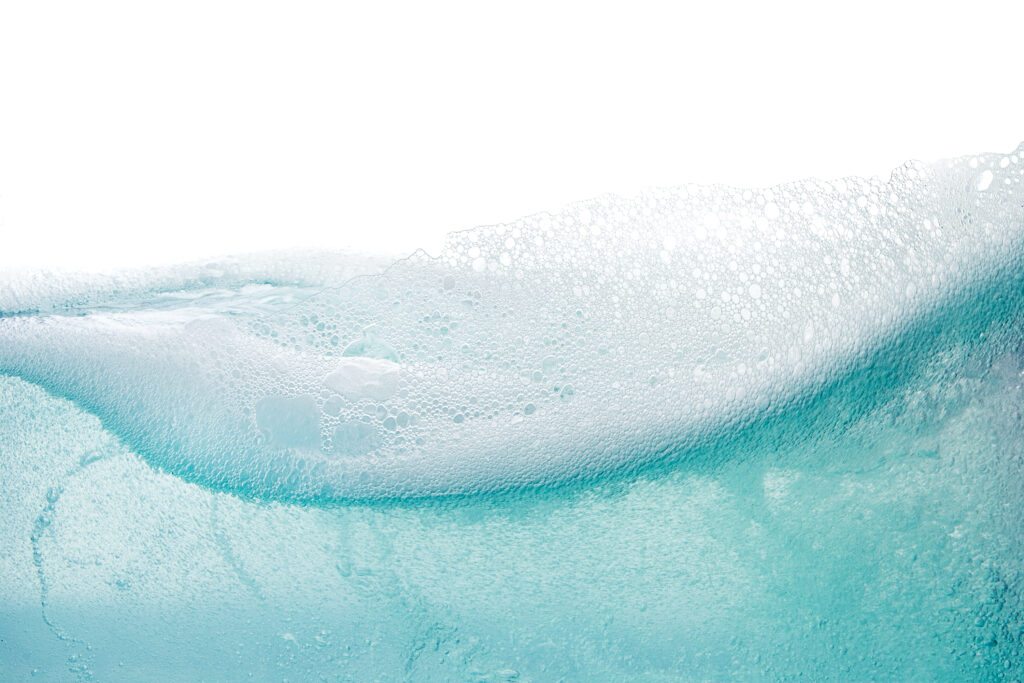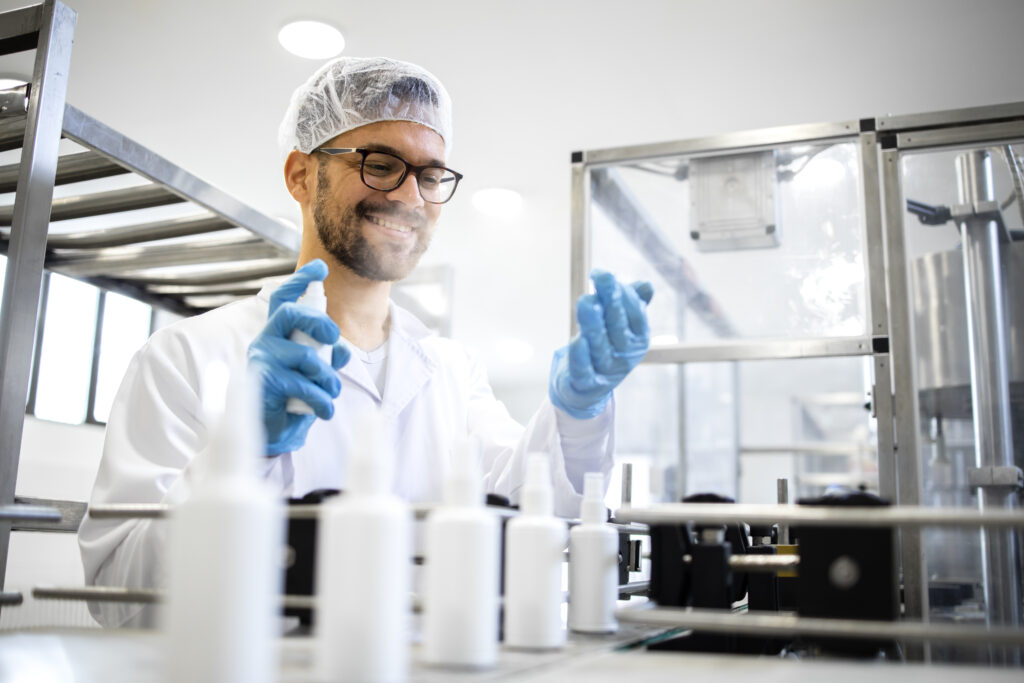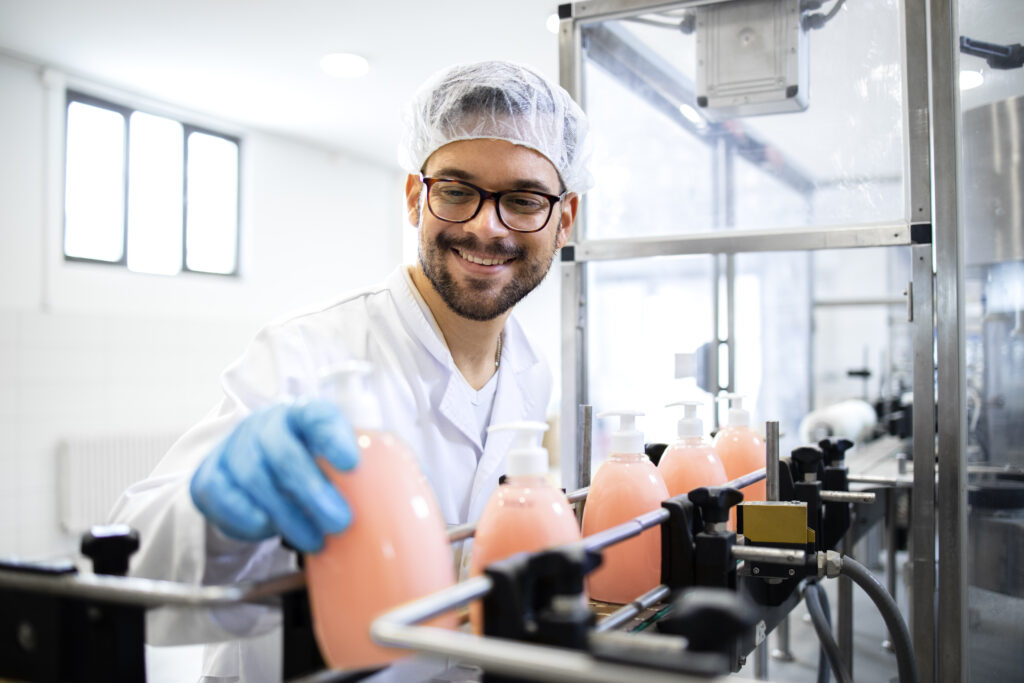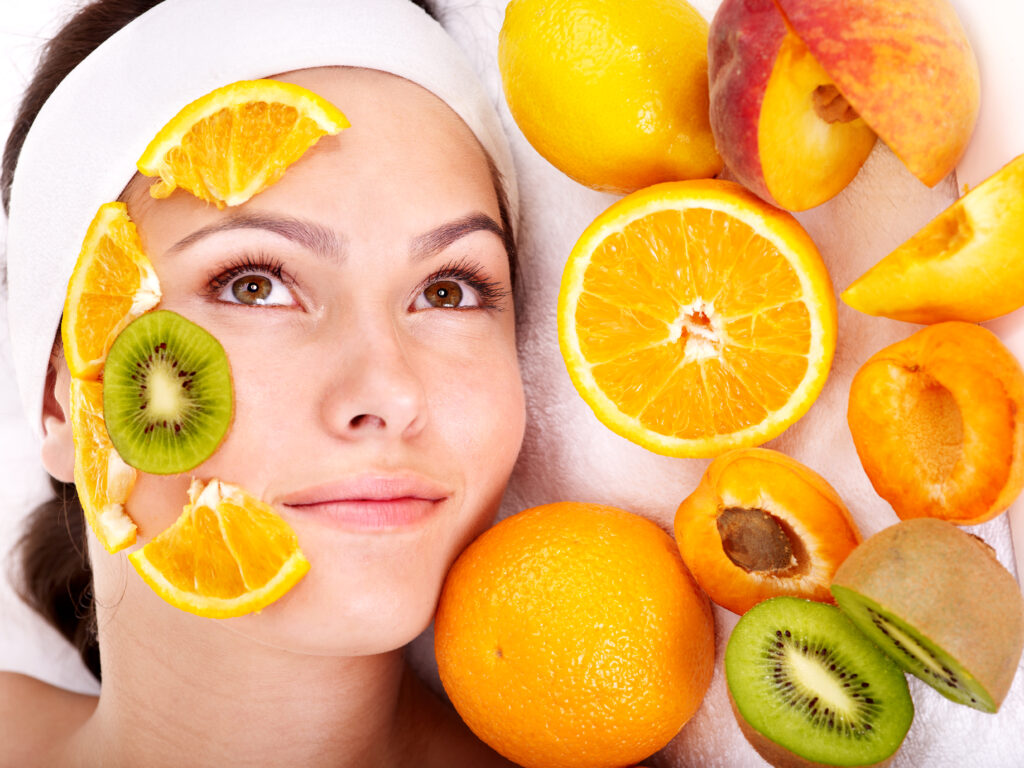Cosmetics
Cosmetics Industry

Antifoaming Agents (Polydimethylsiloxane (PDMS))
- Foaming is an undesirable side effect of certain industrial processes which reduces processing and storage capacity, decreases operating efficiencies, and creates problems with product quality and performance.
- To effectively control foaming, it is necessary to use a Defoamer to chemically break the films of liquid which surround the bubbles of gas released in processing, or to use an Anti-Foaming Agent to prevent the foam films from forming in the first place.
- Polydimethylsiloxane or PDMS is a Silicone-based foam control additive and is a cost-effective and efficient option for preventing and controlling foam.
- Due to low surface tension Silicones spread evenly and rapidly over a foam film, facilitating penetration and collapse of the foam.
- Silicones also possess the advantage of being non-contaminating, since they are inert and are typically effective at much lower concentrations than non-silicone defoamers.

Stabilisers (Surfactants/ Emulsifiers) (Polysorbates (20, 60 & 80), Laureth-4, Potassium Cetyl Sulfate)
- Surfactants such as Polysorbates, Laureth-4 and Potassium Cetyl Sulfate work by lowering the surface tension between two substances, such as two liquids or a liquid and a solid. A surfactant molecule contains one hydrophilic end (attracted to water) and one lipophilic end (attracted to oil). This allows surfactants to attract and suspend oils, dirt, and other impurities that have accumulated on the skin and wash them away.
- Polysorbates, Laureth-4 and Potassium Cetyl Sulfate also work as emulsifiers to improve the consistency of a product, which enables an even distribution of topical skincare benefits. They are especially necessary when a formula contains both water and oil components. Mixing water and oil creates a dispersion of oil droplets in water (and vice versa). However, these two phases can separate if the product is left to settle. To address this problem, an emulsifier is added to the formula to help the droplets remain dispersed.

Thickeners (Guar Gum, Carbomer 940, Sodium Carboxymethyl Cellulose, Bentonite, Silica)
- Thickeners enhance the consistency, volume, and viscosity of cosmetic products, thereby providing more stability and better performance.
- While some thickeners have also emulsifying or gelling properties, the majority of thickeners have the ability to retain water on the skin and act therefore as moisturizers.
- Thickeners can be completely natural like waxes but also synthetic or semi-synthetic. They are derived from various sources and consist of very different molecular structures including polysaccharides, proteins, alcohols, silicones, or waxes.

Preservatives (Sodium Benzoate)
- Preservatives such as Sodium Benzoate are used in cosmetics to prevent the growth of harmful bacteria and mold during the formulation/ manufacturing process, shipment, storage, or consumer use.
- They help to preserve the formula and ensure the durability of the cosmetic products.

Antioxidants (Ascorbic Acid)
- Dermatological and cosmetic formulations contain fragrance, fats and oils, which are all subject to auto-oxidation by exposure to air, causing ‘off’ odours and chemical degradation.
- Addition of antioxidants such as Ascorbic Acid can be used to preserve the formulations and increase shelf life. Antioxidants can be lipid-soluble, water-soluble or both.
- More importantly, antioxidants neutralize free radicals, which are produced in our skin by sunlight, street air, auto pollution and other environmental factors, especially industrial sources. Thus, antioxidants play a role in slowing down the aging process, as Free radical oxidation is the basis of the aging process because it causes permanent deterioration of the skin cells’ support structure by decreasing elasticity and resiliency.
